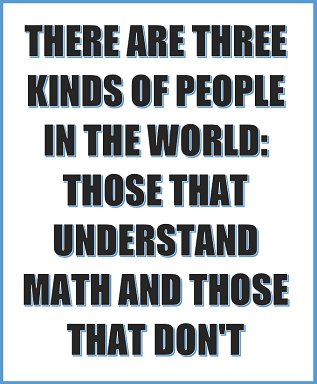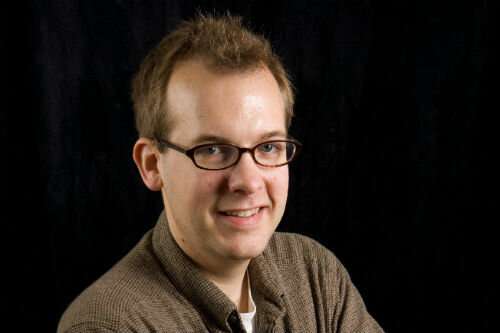Mathematicians like to solve problems, that’s what doing math is after all, solving problems. In fact mathematicians enjoy problem solving so much that they often make some up just in order to have the fun of solving them.

One such problem is the sum of three cubes for the integers between 0 and 100. This problem was initially posed in 1954 at Oxford University and is sometimes known as solutions for the Diophantine equation.
The problem, simply stated is, can a solution be found for the equation:
x3+y3+z3=k (equation 1)
Where k is an integer between 0 and 100 and x, y, and z are integers not necessarily between 0 and 100 nor even positive.
One example is easy to construct:
13+23+33=1+8+27=36 (equation 2)
Using that solution, and remembering that x, y or z can be negative quickly gives three more solutions.
(-1)3+23+33= -1+8+27=34 (equation 3)
13+(-2)3+33=1-8+27=20 (equation 4)
(-1)3+(-2)3+33=-1-8+27=18 (equation 5)
I’ll give one more playful solution:
23+33+43=8+27+64=99 (equation 6)
Again using negative integers quickly allows three other solutions to be constructed but I’ll leave them for the student to discover as they say.
You can play at individual solutions for a while but if you try to work methodically starting at zero you quickly run into problems. For example zero itself only possesses the trivial solution:
(a)3+(-a)3+(0)2=0 (equation 7)
Where a is any integer. If any non-trivial solution existed for zero it would in fact be a counterexample to Fermat’s famous last theorem.
For k=1 or 2 there are in fact families of solutions. For k=1:
(9b4)3+(3b-9b4)3+(1-9b3)3=1 (equation 8)
Where b can be any integer. The family of solutions for k=2 is:
(1+6b3)3+(1-6b3)3+(-6b2)3=2 (equation 9)
Again b can be any integer. To check these solutions it’s instructive give them a try for a nice small number like b=2 and see how they work out!
By the way you are allowed to use the same integer more than once as in this solution for k=3:
13+13+13=3 (equation 10)
O’k, so we’ve found some of the easy solutions but finding solutions for most integers quickly becomes very difficult. So difficult in fact that many solutions only became possible with the aid of electronic computer. Even with the assistance of the world’s best computers solutions for some integers proved elusive.
Indeed, after 65 years two numbers remained for which there was no known solution, 33 and 42. Then earlier this year the University of Bristol mathematician Andrew Booker managed to grab a couple of weeks time on the university’s supercomputer. The solution he obtained for 33 is:

88661289752875283+(-8778405442862239)3+(-2736111468807040)3 =33 (Equation 11)
So now the only number left without a solution was 42. Fans of the British Radio/TV/Book series ‘A Hitchhikers Guide to the Galaxy’ by Douglas Adams may recognize 42 as the answer to the ultimate question about ‘Life, the Universe and Everything!’ Now the fact that the final number lacking a solution should be a fan favourite is of course just a coincidence. Nevertheless a solution for 42 proved to be an order of magnitude more difficult to obtain.

Realizing he needed even more computing power Booker teamed up with MIT professor Andrew Sutherland, an expert in parallel computing. This is a technique where numerous computers work simultaneously on different parts of the same problem. Professor Sutherland set up a massive ‘planetary computing platform’ consisting of the spare, unused time of half a million home PCs.

It took one million hours of computing time, which is still only 2 hours per computer after all, but the solution to 42 was finally found.
(-80538738812075974)3 +804357581458175153+ 126021232973356313 =42 (Equation12)
So all of the numbers k between 0 and 100 have now been solved, but there’s no reason to stop at 100 is there? The smallest number now without a solution is 114 so get out a pencil and paper and get busy!
